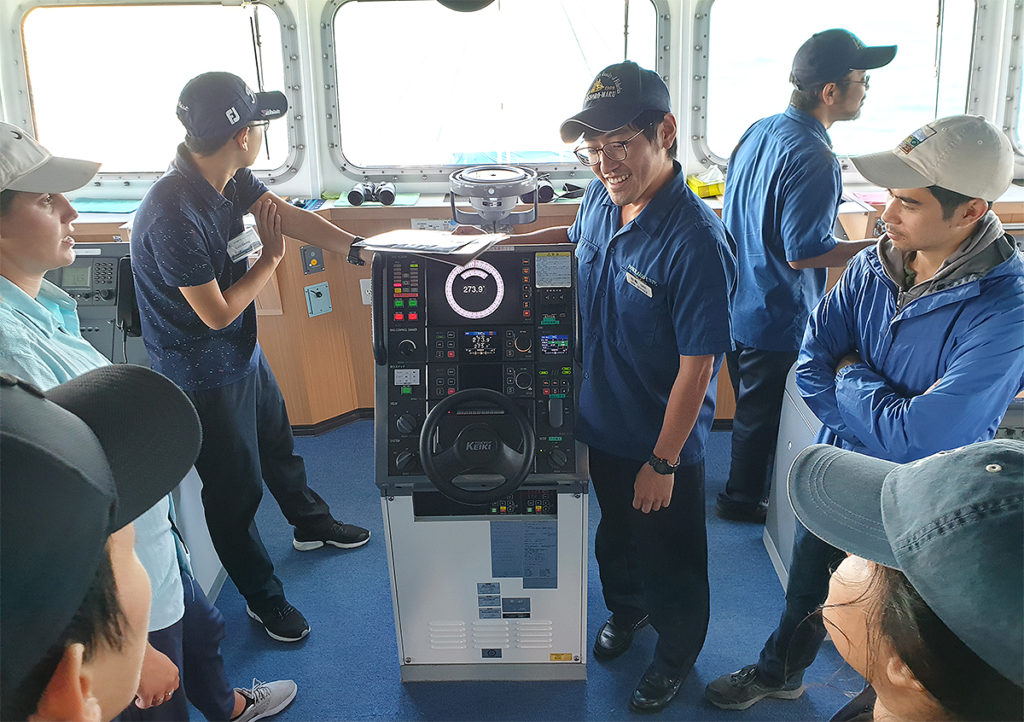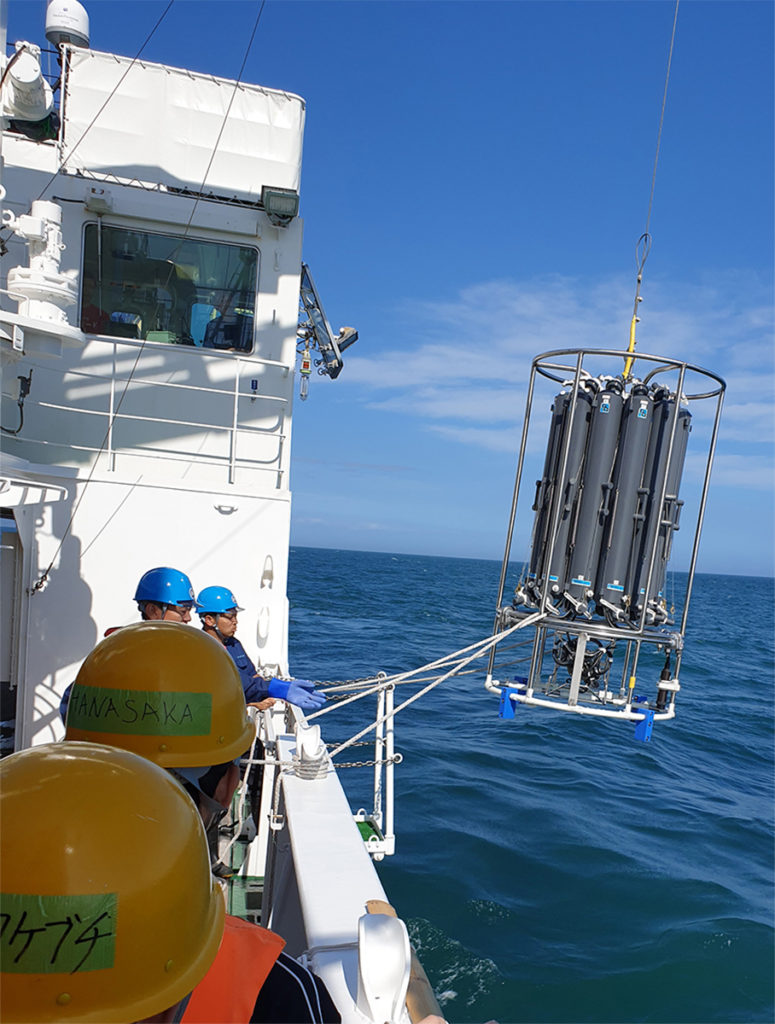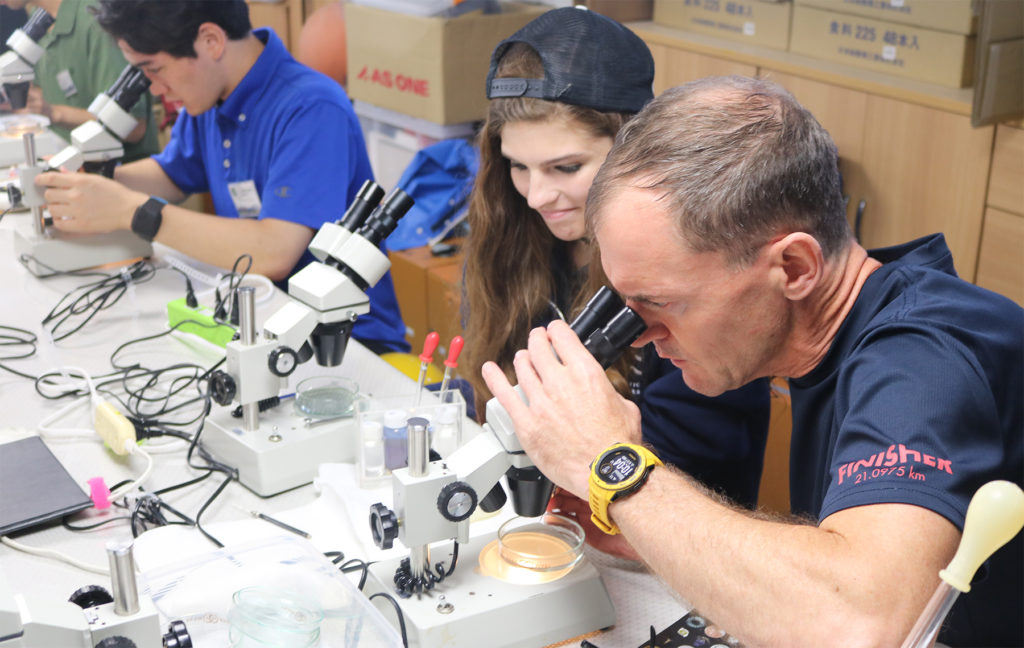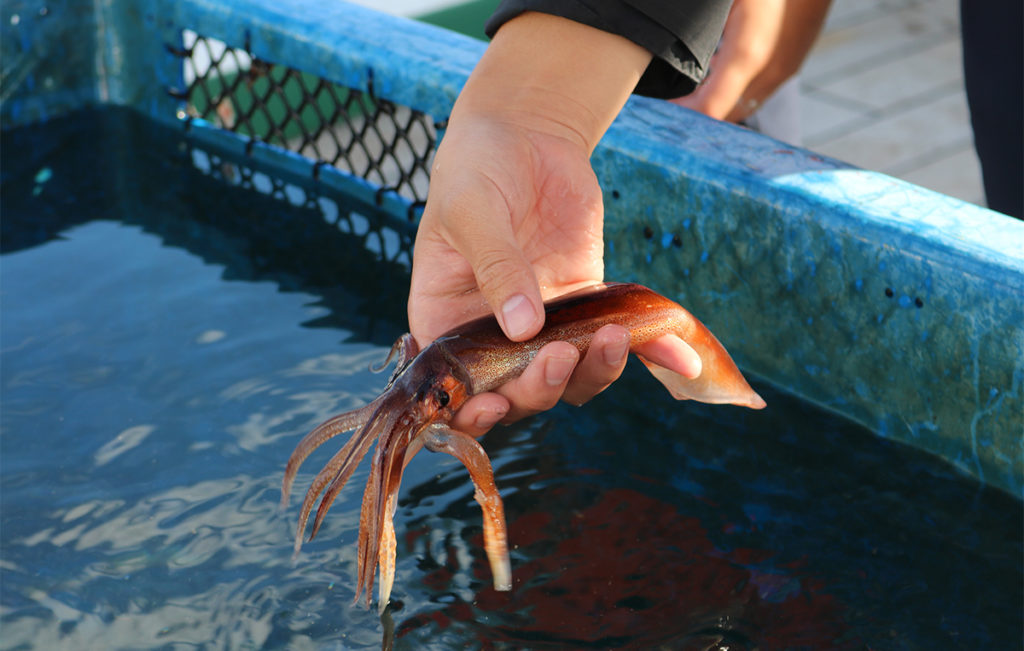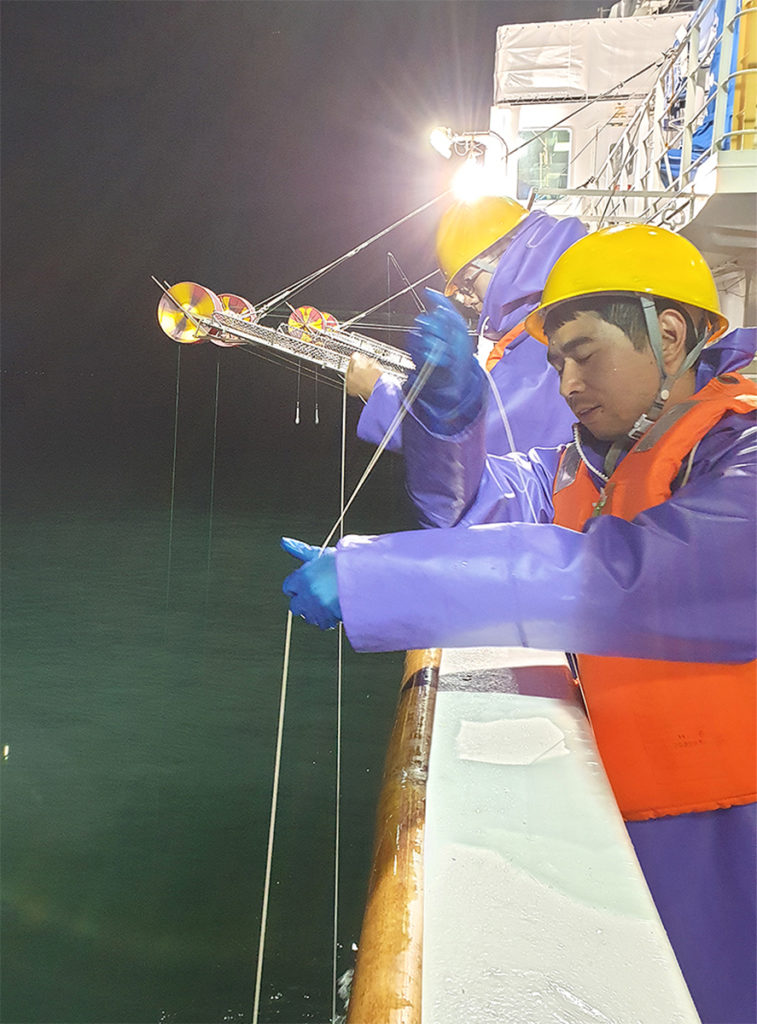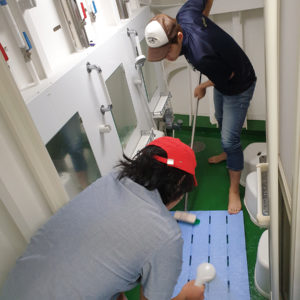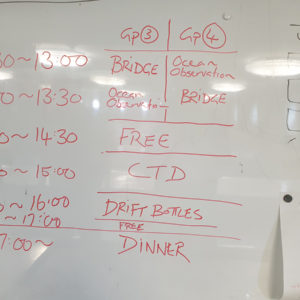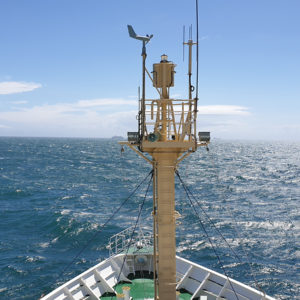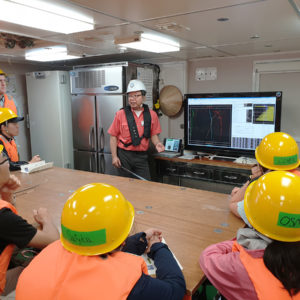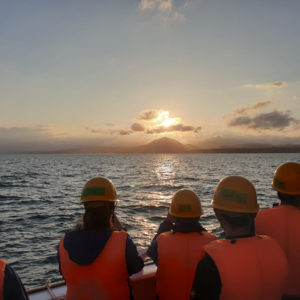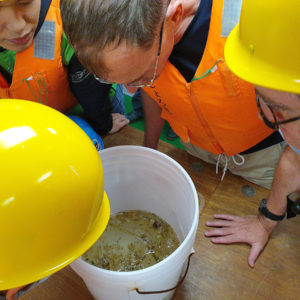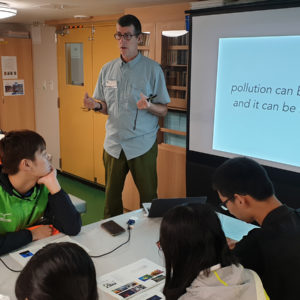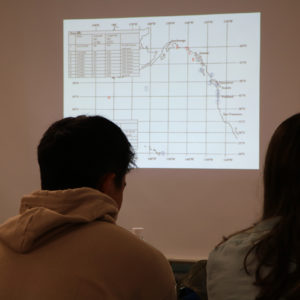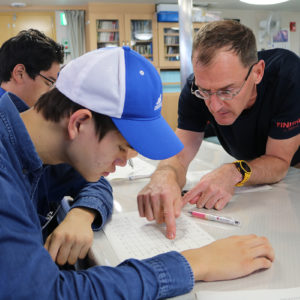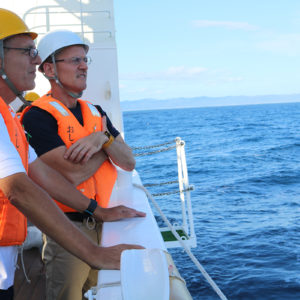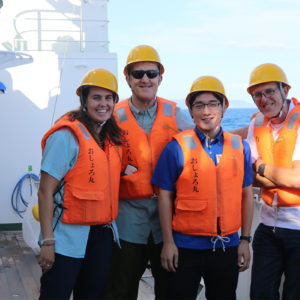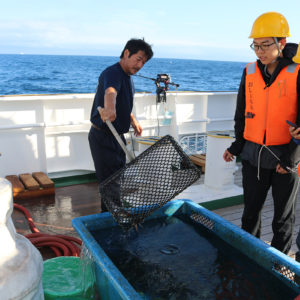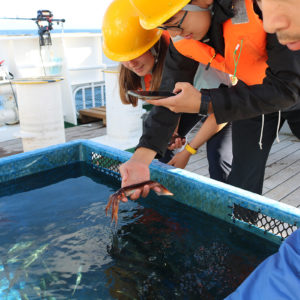Super Global Cruise on the Oshoro Maru V — Part 2 of 2
University News | August 30, 2019
This is Part 2 of our story about the Super Global Cruise. Click here to read Part 1.
The second day started with deck washing followed by a number of activities. After breakfast, the participants collected and observed sea plankton, which has a large influence on the ocean’s productivity. At 9 AM, the ship left the port and went out into the rough Tsugaru Strait. In the afternoon, the students were invited to the bridge again to steer the ship under the instruction of the wheelman. Also, using a large piece of equipment called CTD Water Unit, they also learned how to measure electric conductivity (salt concentration) and temperature at different depths in the sea.
In the evening, the participants collected debris on the sea surface using a Neuston net and observed and separated micro-plastics, which are known to cause serious problems in animals and humans after entering the food chain. Assistant Professor Tony Chittenden, in his following lecture, discussed various types of marine pollution and the necessity to maintain the health of the marine ecosystems that we all rely on.
One of the highlights of the cruise was squid jigging and spotlight fishing for mackerel at night. Squid is one of the major fishery products underpinning Hakodate’s local economy and is consumed all over the country.
Towards the end of the course, Gao Ziming, a student of aquarium landscape building at Huazhong Agricultural University said, “I joined this program to familiarize myself with marine science as well as to improve my English. Studying on the ship with friends from other countries was an exciting experience and I truly enjoyed squid jigging in particular. I want to come back to Hokkaido University to study marine animals in the future.”
On the last day, participants spent the morning cleaning their cabins and the common areas. Daily house-keeping activities were also an important part of the program in order to learn about life at sea. Finishing the busy but enjoyable days on the Oshoro Maru V, all of the participants disembarked safely before noon on the 18th. They returned to the university’s Hakodate campus and concluded the program on the 20th by compiling and presenting their ideas for a more resilient Hakodate.
This program was made possible by Assistant Professor Hiroji Onishi of the School of Fisheries Sciences, First Officer Naoki Hoshi, Third Officer Taichi Sato, and many other Oshoro Maru V crew members.
Written by Naoki Namba

